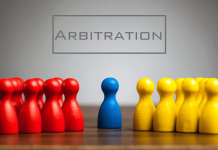This article is written by Saumya Vanwari who is pursuing a Certificate Course in Arbitration: Strategy, Procedure and Drafting from LawSikho.
Table of Contents
Introduction
With the decision of the Emergency arbitrator (“EAr”) favouring Amazon in the Future Retail-Amazon dispute, the issue pertaining to the enforceability of emergency orders has once again gained momentum before the Delhi High Court. In August 2020, Reliance Retail Ventures Limited (“RRVL”) signed an agreement for the acquisition of assets and business of Future Retail Limited, a subsidiary of Future Coupons Limited. Amazon, however, opposed the agreement as being violative of a shareholders’ agreement entered between him and the parent company Future Coupons Limited. Resulting to which, it initiated arbitration proceedings and applied for Emergency Arbitration before the Singapore International Arbitration Centre (“SIAC”). The EAr ruled in the favour of the Amazon and restricted the agreement until the arbitral tribunal reaches its final decision. Nevertheless, RRVL and Future Group have clearly stated that as they are not the party to the agreement for which EA orders are passed, and the EA orders being non-binding in the Indian domain. Thereby, they would proceed with the transaction without any further ado.
The dispute has specifically highlighted the lacunae that exist in the Indian Arbitration and Conciliation Act, 1996 (“A&C Act”) concerning the recognition of emergency arbitration (“EA”) and the enforceability of emergency awards or orders. It has also brought forth the question raising concerns of the emergency arbitrator order on the third-party.
Through this article , the author aims to discuss the relevance of Emergency Arbitration and the reason behind the ambiguity in this concept. Moving further, the author would highlight the lacunae in the existing Indian legal regime concerning EA and the inconsistencies that have been brought through different case laws. The author would conclude the article suggest ways that India could adopt to regulate the enforcement of EA awards through the developed regime of different countries.
Emergency Arbitration
Emergency Arbitration is the mechanism that allows parties to obtain urgent relief that cannot await the constitution of an arbitral tribunal. This type of arbitration generally derives its authority from the arbitration agreement.
Two legal maxims that form its genesis are: firstly, the reasonable possibility that the claimant would succeed on merits (fumus boni iriuris), and secondly, the claimant would suffer irreparable harm if the measure is not granted immediately (periculum in mora). These could be considered as special-purpose arbitral tribunal whose mandate gets terminated once their function is performed.
This method is used by parties as an alternative to court for obtaining interim relief. It has attained preference over the national courts lately because of the principle of party autonomy. Resorting to court for interim relief not only increases the litigation cost and hampers the expedited arbitration procedure but also raises the chance of leaking confidential information of the parties. This could be attributed as one of the major reasons that many international institutions like SIAC and ICC, and developed jurisdictions like Singapore and Hong Kong have adopted the provisions concerning EA.
Scenario in India
Although the term “Emergency Arbitration” has not been statutorily recognised under the A&C Act, 2015 but the leading international arbitration institutional rules in India like Delhi International Arbitration Center (“DIAC”), Mumbai Center for International Arbitration (“MCIA”), Madras High Court Arbitration Center rules, 2014 (“MHCAC”) have adopted the provisions of EA similar to that of prominent international arbitration institution rules.
The legislatures have generally shown a pro-arbitration approach in India. With the 2015 Amendment of the A&C Act, Section 9 was made applicable to foreign-seated arbitration and even Section 17 was inserted which mandates the parties to approach an arbitral tribunal for obtaining interim measures. However, this did not bring clarity concerning the enforceability of Emergency orders or awards in India.
Under S. 2 (1)(d) of the Indian A&C Act, the term arbitral tribunal comprises “sole arbitrator or a panel of arbitrators”. To ensure that the emergency orders of international rules like SIAC or LCIA get statutory recognition in India, the 246th Law Commission report and the B.N. Srikrishna Report have also recommended including the term “Emergency Arbitrator” under the definition of the arbitral tribunal. They have also suggested incorporating the term “Emergency award” under the definition of “arbitral award” which currently only includes the “interim award” under S 2(1)(c) of the A&C Act. Nonetheless, these recommendations were neither incorporated in the 2015 Amendment Act nor the 2019 Amendment Act. These lacunas’ have raised several complexities before the High Courts and Supreme Court
Legal Complexities
- The uncertainty of courts towards EA: The definition of arbitral tribunal does not include “emergency arbitration” and there is even no specific provision for direct enforcement of foreign emergency awards in the A&C act. Thereby, the parties usually resort to court under Section 9 of the A&C Act for obtaining relief of foreign emergency awards. However, the Delhi High Court in the case of HSBC PI Holdings (Mauritius) Limited v. Avitel Post Studioz Ltd. has specified that the application for interim relief before the court would be given an independent view from the EA proceedings.
CASE LAWS
(a) Raffles Design International India Pvt. Ltd. v. Educomp Professional Education: The dispute concerning the Share Purchase Agreement (having a dispute resolution clause under SIAC rules) arose between the parties. The petitioner initiated arbitration and filed an application for the Emergency Arbitration. The EAr granted the award in the favour of petitioner, and thereafter he filed petition before the Delhi HC under S.9 for its enforceability. On respondent’s opposition that the A&C act does not apply to the EA proceedings, the court held that the emergency award is not directly enforceable under the S.9 Part I of the act. Nevertheless, the parties can file separate suit and court can thereby have an independent opinion on the enforceability of emergency award.
(b) Ashwani Minda v. U-Shin Ltd: The dispute concerning the joint venture agreement arose between the parties. The Indian party initiated arbitration against the Japanese party and applied for EA under the Japan Commercial Arbitration Association (“JCAA”) rules provided in the agreement. The EAr declined the relief to Indian parties. Therefore, the party approached Delhi HC under Section 9 of A&C act for obtaining the emergency relief that has been rejected by EAr. The court opined that by adopting JCAA rules, the parties have impliedly excluded the applicability of S.9 PART 1 of the act. The court also held that after being rejected to obtain relief in EA, the petitioners cannot appeal before the court for the EAr Judgment.
In both the above-mentioned cases, the court having a pro-arbitration approach enforced the emergency award (directly or indirectly). The Ashwani Minda case differentiated itself from Raffles on the ground of “implied exclusion” because of the different institutional rules adopted by parties- JCAA and SIAC. In this case, even if the EAr would have granted the award, then too because of “implied exclusion” it would have remained unenforceable. This highlights the lacunae of provisions concerning EA and how different curial laws of international arbitral institutions can affect its enforceability and recognition in India.
- The limitation of Section 17 to the Emergency order rendered under Part 1 of the A&C Act– After the 2015 Amendment, the interim orders passed through the arbitration having seat in India, are generally enforceable under Section 17 of A&C Act. However, the term “only arbitration tribunal” [as has been defined in Section 2(d)] mentioned in the above-mentioned provision does not include EA. Furthermore, it has been clarified by the court in the Raffles Design case that Section 17 would not be applicable for arbitral proceedings not seated in India. In the Future-Amazon dispute also, the bone of contention is the enforceability of emergency order as S. 17 would not be applicable for seeking emergency relief in India and there are no provisions similar to S.17 under the Part II of the Act.
- The requirement of “finality of awards” in New York Convention (“NYC”): PART II of A&C act that deals with “enforcement of foreign awards” is based on NYC. According to the convention, three criteria must be fulfilled to establish Award as enforceable- (i) Binding upon the parties to such arbitration, (ii) consonance with the arbitration agreement, and (iii) final. The issue pertaining to finality arises in Emergency Awards. This can be witnessed even from the definition of foreign award under Section 44 of the Act which only mentions arbitral award and not interim awards. Moreover, as outlined in S. 48 of the act, the enforcement of foreign award can also be refused if the opposite party proved that the award has not become binding or can be suspended or set aside. Applying S. 44 along with S.48 in the Future-Amazon dispute also, it can be inferred that the emergency award granted by SIAC would not be enforceable under the PART II of the act.
- The Indian based Institutional Centres like MCIA and DCIA were formed to act as an administrator for the counties that recognises EA as an International Law. They can no way act superior or outside the scope of Part 1 of the Indian A&C Act.
Conclusion
“Emergency arbitration”, as the term suggests was originated for providing interim relief to parties and maintain their confidentiality. However, there being no express provision concerning emergency arbitration in India, the parties have to time and again file a fresh application before the court under S.9 of the A&C act. Thus, the whole purpose of introducing EA ultimately gets finished. Furthermore, the new complexities that were witnessed in the Ashwani Minda case with respect to the “implied exclusion” of parties barring PART 1 of the act purport the parties to now remain more vigilant before choosing the institutional rules in their dispute resolution clause. All these manifest the existing gaps for EA laws in India and the need for the legislation to provide it with statutory recognition.
Various states like Singapore, Hong Kong, and New Zealand have amended their legislation and have recognized the emergency arbitration. These states have broadly interpreted the NYC to adopt this policy. For instance, in Hong Kong, Section 22B (1) has been inserted which states that an EAr can grant relief inside or outside Hong Kong following the leave of court and would have the similar effect to the decree of the court. The “finality” of an arbitral award was also interpreted in the decision given by the Singapore Court of Appeal in PT Perusahaan v. CEW Joint Operation, wherein the court held that all the awards, despite the stage of arbitration at which they are issued have the effect of final and binding.
Even the Indian experts in the Law Commission report suggested amending the A&C act by including “emergency arbitrator” within the term “arbitral tribunal”. India should also adopt EA laws in its legislation and initiate its step further towards arbitration. This would not only save the time of court but also create certainty with respect to case relating to EA.
However, till the time India accept EA, the parties should remain cautious while adopting institutional rules and depending upon foreign emergency awards to defend their rights before the courts.
Students of Lawsikho courses regularly produce writing assignments and work on practical exercises as a part of their coursework and develop themselves in real-life practical skill.
LawSikho has created a telegram group for exchanging legal knowledge, referrals and various opportunities. You can click on this link and join:












